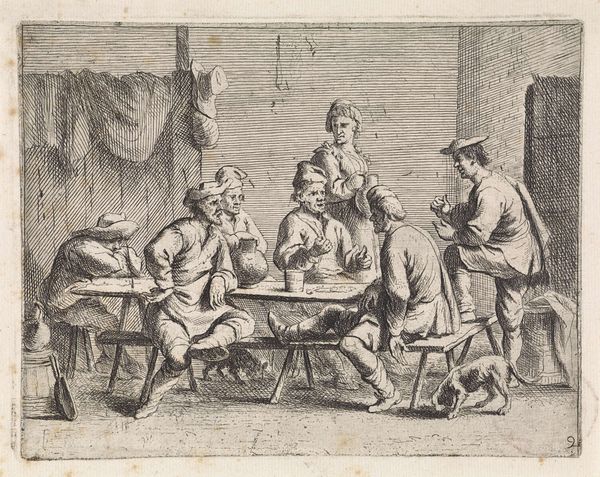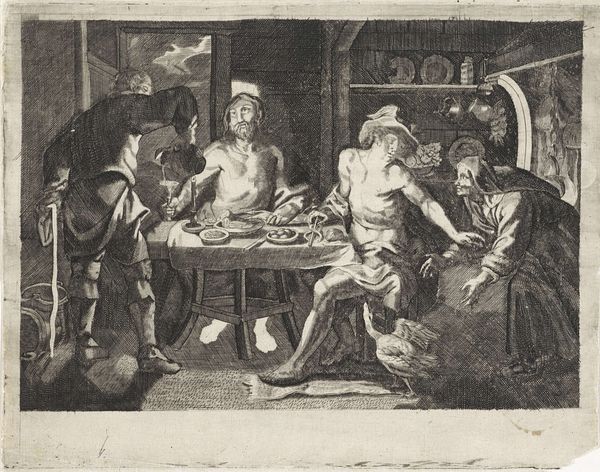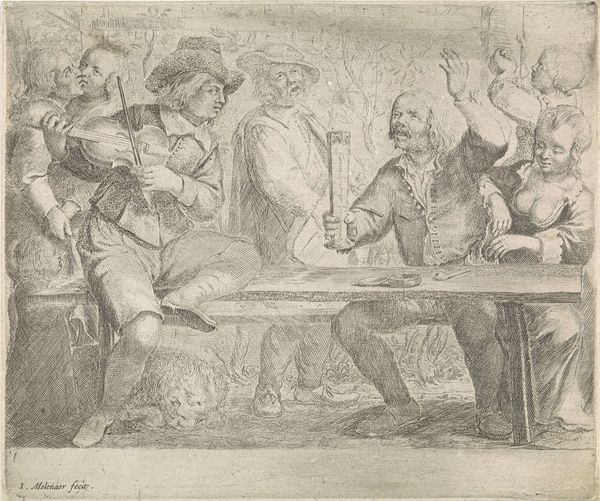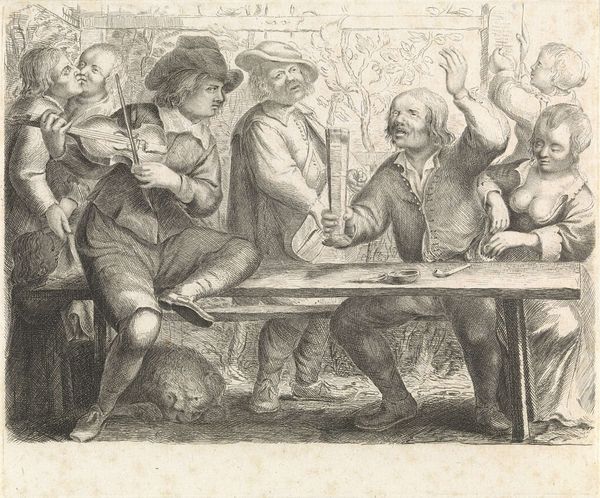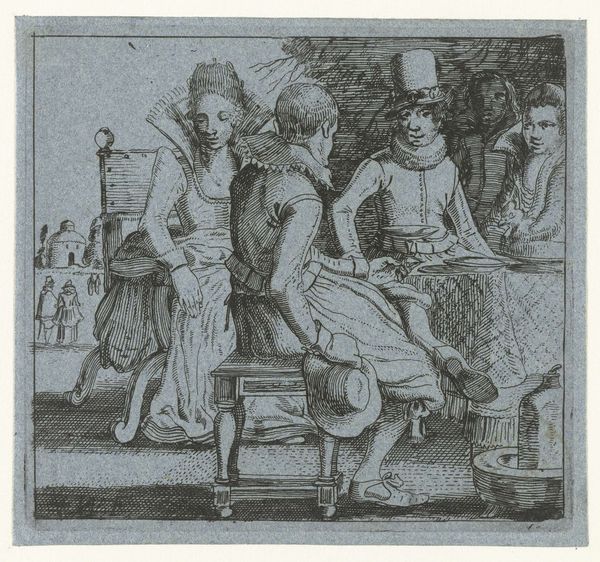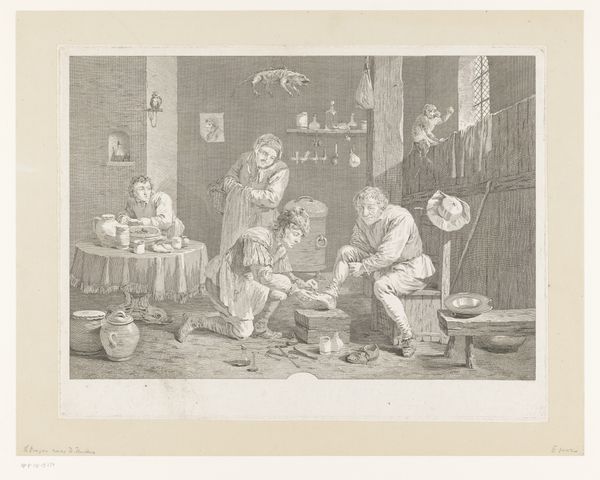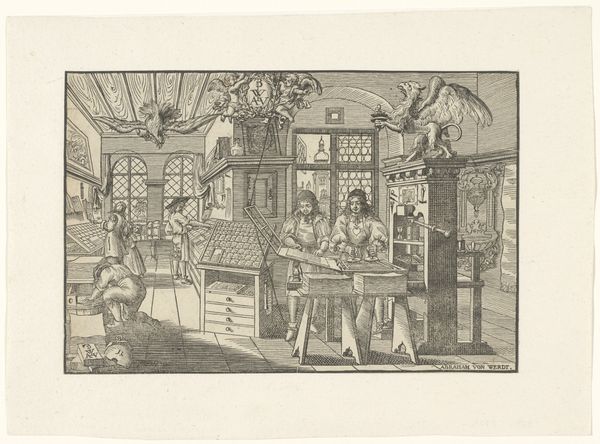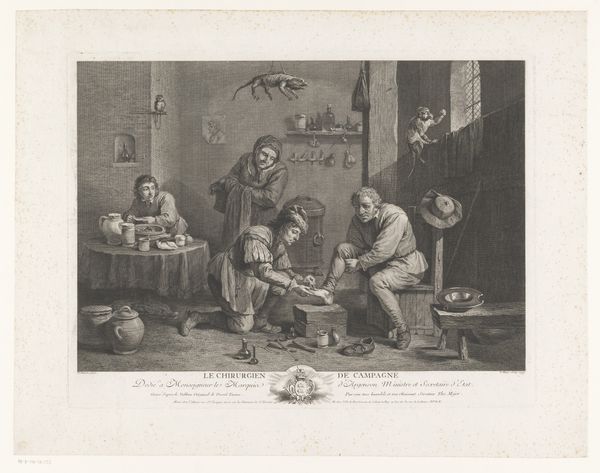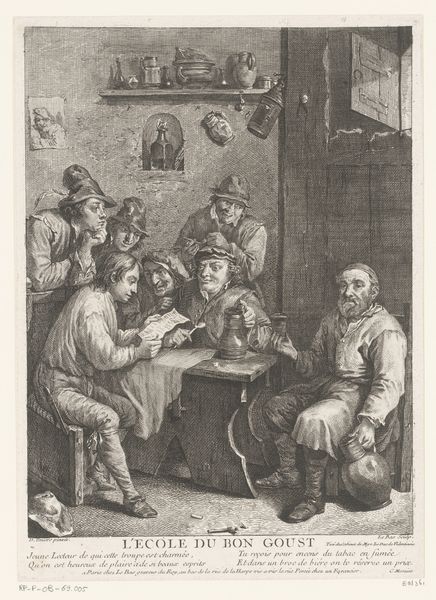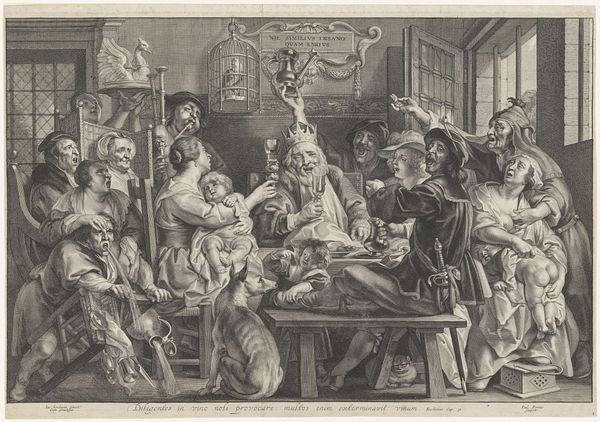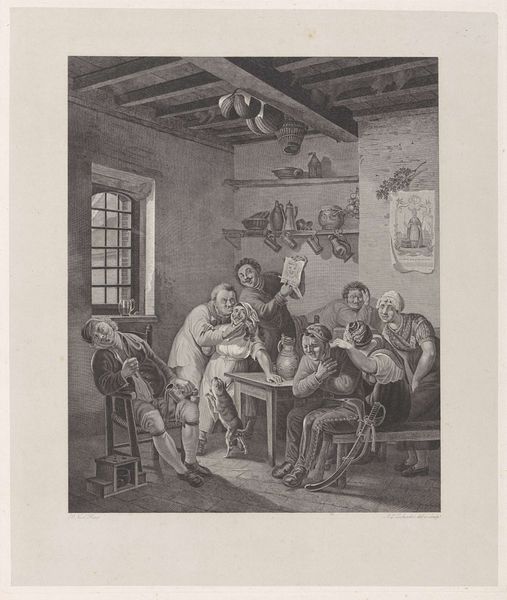
engraving
#
narrative-art
#
dutch-golden-age
#
genre-painting
#
history-painting
#
engraving
Dimensions: height 704 mm, width 122 mm
Copyright: Rijks Museum: Open Domain
Editor: Here we have "Zes lieden in een interieur," or "Six People in an Interior," an engraving made sometime between 1690 and 1730 by an anonymous artist. It feels like a glimpse into a cozy, perhaps a bit raucous, gathering. What stories do you think this piece is telling? Curator: Well, let's consider the historical moment. This falls within the Dutch Golden Age, a period of immense economic and cultural flourishing, but also stark social hierarchies. Notice the emphasis on domesticity – these interiors were potent spaces of gendered labour. Is there anyone seemingly confined and in charge? Editor: Perhaps the woman in the window, looking in? It does strike me as a gendered scene, a divide, perhaps, between a working man and the domestic woman. Curator: Precisely. And how might this relate to ideas around female virtue and enclosure at that time? What’s visible on that wall - the decoration on the wall? Consider too that the narrative element positions itself, perhaps subversively, in relation to its historical peers, typically history painting. By zooming into everyday life, what perspectives emerge? Editor: It's fascinating to think of it in terms of power dynamics. This domestic scene is less about leisure and more about prescribed gender roles. The men sing and socialize, while there's a division of gender between freedom and labor. It pushes me to see these genre paintings in terms of their sociological context. Curator: And that subtle interplay of artistic representation and social reality, reveals hidden aspects of everyday life and shifts our understandings.
Comments
No comments
Be the first to comment and join the conversation on the ultimate creative platform.


